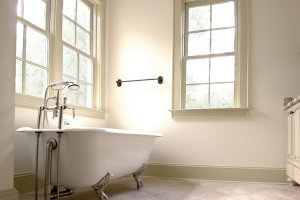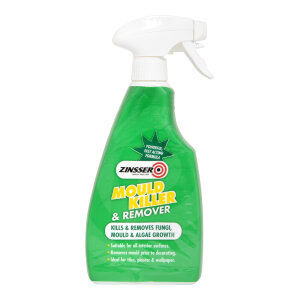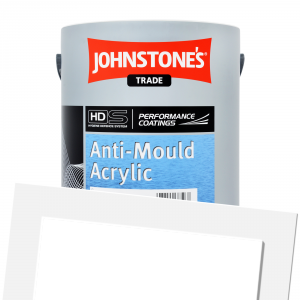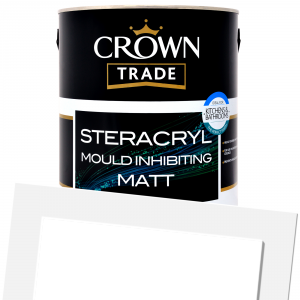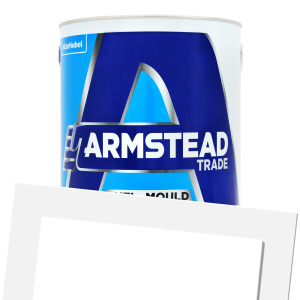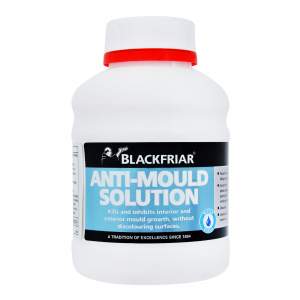Tackling fungicidal growth

June 12th, 2020
Mould growth
Mould mildew is a form of fungus propagated from spores present in most atmospheres which develop when conditions are favourable. The essential requirements are moisture and organic material.
Any
environment in which the relative humidity exceeds 70 per cent for lengthy
periods provides sufficient moisture whilst there is usually a film of organic
material on most building surfaces. However, mould growth is likely to be most prolific in situations such
as breweries and bakeries where there is an ample supply of organic material
and relative humidity is often higher than 70 per cent.
Environments where humidity exceeds 70% for lengthy periods provide sufficient moisture for mould growth.
Unlike most other vegetable growth, moulds do not require light for their development and they are capable of flourishing in a wide range of temperatures. Mould growths are not usually particularly destructive to paint films unless the infection is deep seated or well established but they are unsightly and often difficult to eradicate.
They
usually have a greyish or sooty appearance although some forms are coloured or
produce stains which discolour the surface. Moulds can often be distinguished from dirt and chemical stains by
examining the surface with a magnifying glass of x10 or higher magnification
when the minute threads(hyphae) characteristic of most moulds can be seen.
Mould does not require light for its development and is capable of flourishing in a wide range of temperatures.
Algae
Like mould, algae on exterior surfaces only thrives in the right conditions; plenty of moisture and nutrient on the surface, often from nearby vegetation. It is not possible to change the environment other than by removing adjacent shrubs and trees, but the remedial treatment is similar to that for mould growth.
In periods of dry weather, growths often turn to a grey colour resembling dirt and are sometimes removed by washing down with water. In fact this can serve to spread the growth to areas previously not affected, and is not recommended as spores may still be left active on the surface. Therefore a fungicidal wash should be used instead of water.
Many
bare exterior walls do not show evidence of algal growth, but are already in
the very early stages of an attack.
Because of this, it is a wise precaution to use fungicidal wash prior to
painting, even where there is apparently, no algae present. This simple operation is inexpensive.
Spores can be left active so a fungicidal wash is often recommended.
‘Decorating areas prone to moisture without decent preparation can actually lead to the problem returning.’
Algae
Like mould, algae on exterior surfaces only thrives in the right conditions; plenty of moisture and nutrient on the surface, often from nearby vegetation. It is not possible to change the environment other than by removing adjacent shrubs and trees, but the remedial treatment is similar to that for mould growth.
In periods of dry weather, growths often turn to a grey colour resembling dirt and are sometimes removed by washing down with water. In fact this can serve to spread the growth to areas previously not affected, and is not recommended as spores may still be left active on the surface. Therefore a fungicidal wash should be used instead of water.
Ventilation helps reduce the risk of mould and algae but does not rule it out.
Many bare exterior walls do not show evidence of algal growth, but are already in the very early stages of an attack. Because of this, it is a wise precaution to use fungicidal wash prior to painting, even where there is apparently, no algae present. This simple operation is inexpensive.
Ventilation
Because mould is dependent on moisture for its growth, the most effective deterrent is to lower the relative humidity and prevent condensation by good ventilation and effective thermal insulation. However, these measures are not always practicable and may not be justified where the infection occurs only seasonally. The alternative is to control growth by regular application of sterilising wash.
Some fungicidal washes (but not bleach
solution) leave a residue of fungicide on the surface which discourages further
growth and this type is preferred where conditions are especially favourable to
mould growth.




